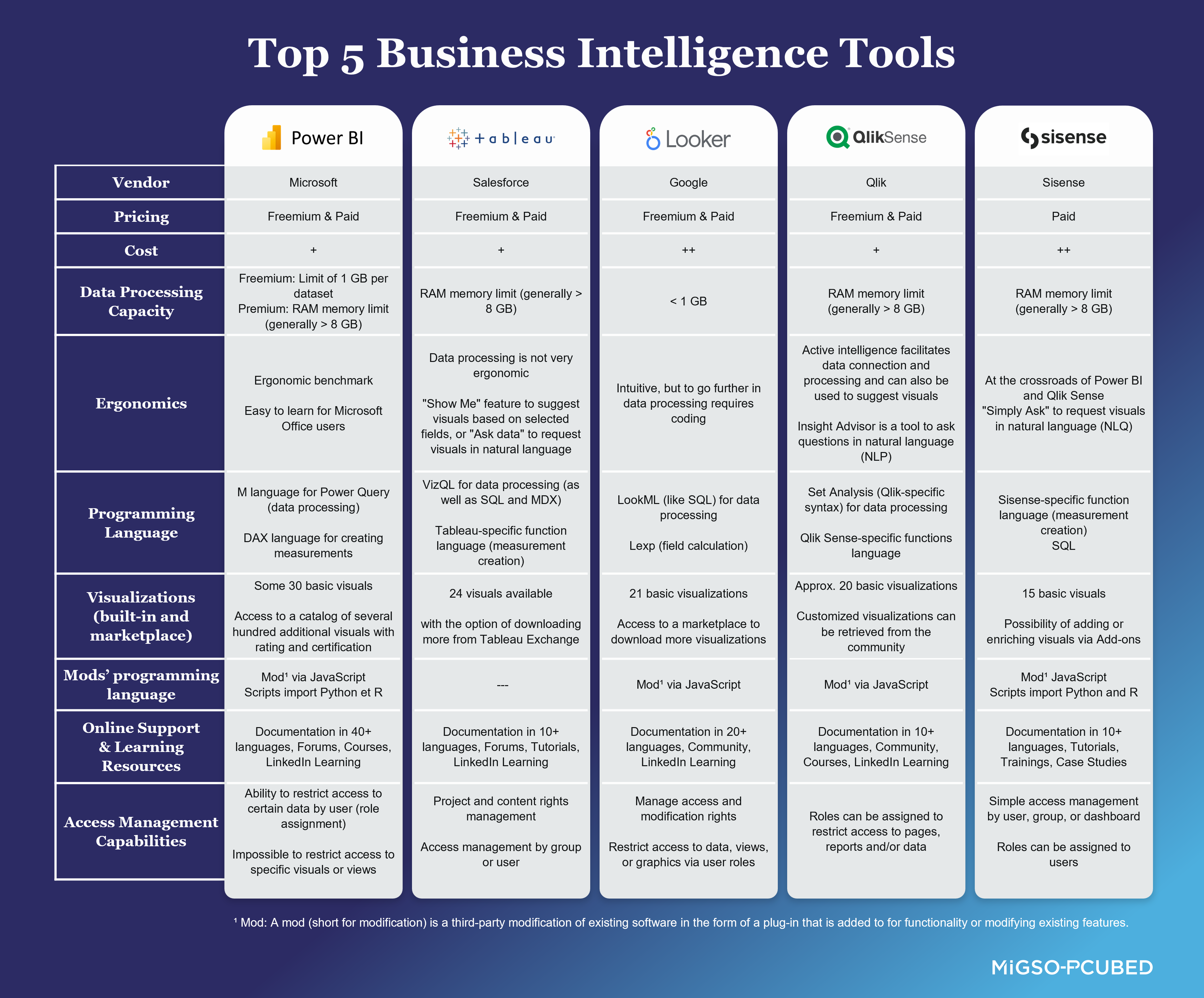Business Intelligence: How to Choose the Right BI Tool for your Dashboard
- Home >
- Blog >
- Digital PMO >
- How to Choose the Right Business Intelligence Tool
Table of Contents
What is a Digital Dashboard?
In today’s fast-paced technology evolutions, data has become an integral part of organizational decision-making to drive towards success. Digital Dashboards have emerged as an invaluable asset for improving business efficiency by visualizing insights from data collected and analyzed. Nowadays, organizations are widely using digital dashboards to report, track and control key performance indicators.
Digital dashboards are dynamic visual representations of an organization’s data by presenting key metrics, performance indicators, and trends in a comprehensible manner.
Traditionally, reports were created by using spreadsheets such as Microsoft Excel or Google Sheets. However, more and more organizations are leveraging self-service Business Intelligence tools which were previously developed and delivered by IT professionals.
What is Business Intelligence?
Business Intelligence (BI) is a set of methods for collecting, processing, analyzing, and visualizing data to help the end-users make data-driven decisions. The role of Business Intelligence is to use data to measure and improve the performance of the organization. Digital Dashboards belong to the visualization of data resulting from such Business Intelligence methods.
Why use BI tools?
BI tools do well where other applications reach to their potential limit. Their advantage is being just as accessible to beginners as they are to more experienced developers.
These tools empower data-driven decision making by enabling timely and informed choices and actions across all levels of the organization. They are ergonomic, interactive, and dynamic solutions that can connect to a large number and variety of data sources. They can also process large volumes of data. Through analysis of extensive data, BI tools unveil trends, patterns, and correlations that might otherwise be overlooked and thus, enables new opportunities for enhancing operational efficiencies.
Due to their web-based accessibility, the data can be updated frequently, and it becomes very easy to share dashboards with many users possible without the risk of corrupting or damaging them. BI tools enable self-service analytics by eliminating technical barriers to expedite the decision-making process.
In terms of data analysis, BI tools outperform traditional tools (such as Excel spreadsheets) due to their capacity for data processing and visualization. Their ability to update in real time and easy-to-understand formats make them ideal for communicating organizational performance. They thus make it possible to optimize resources, evaluate historical trends, and improve the accuracy of forecasts. This gives organizations a considerable competitive advantage.
Multiple BI Solutions: Which is the right one?
While digital dashboards hold immense potential, not all BI tools are created equally. With a wide variety of BI tools available in the market, the key is to select a right BI tool or set of tools that aligns with and meets the unique needs of an organization. Selecting the right tool enables a smooth pathway for its adoption across the organization and is crucial for maximizing efficiency gains. Here is our effort to compare five of the most popularly used BI tools that can help organizations choose right BI tool.
Please note: This is point-in-time data, and these tools frequently roll-out additional features and offer distinct pricing models based on organizational needs.
More on the same subject
Conclusion
The process of selecting the most suitable BI tool proves to be a multifaceted endeavor, demanding careful consideration and thorough deliberation. Crafting an effective BI solution involves addressing additional critical questions: What precise Key Performance Indicators (KPIs) warrant monitoring? Who within the organization should access the data? What financial resources are available for such initiatives considering the budget?
Initially, the answers may be unknown, and this information may ease the journey of selecting an appropriate BI tool that fits the organization’s needs. The true potential of these dashboards is unlocked when the right Business Intelligence tool is selected. By strategically considering factors such as scalability, ease of use, data integration, customization, security, and support, organizations can ensure that their chosen BI tool aligns perfectly with their needs.
At the core is understanding and uncovering the value of data and socializing it within the organization for improved data-driven decision-making. Regardless of which BI tool is chosen, it is important to have a dashboard where all stakeholders can see the most important and real-time information about their projects, programs, and portfolios. This will drive towards the organization’s goals and objectives by leveraging the power of data using BI tools!
Loved what you just read?
Let's stay in touch.
No spam, only great things to read in our newsletter.





